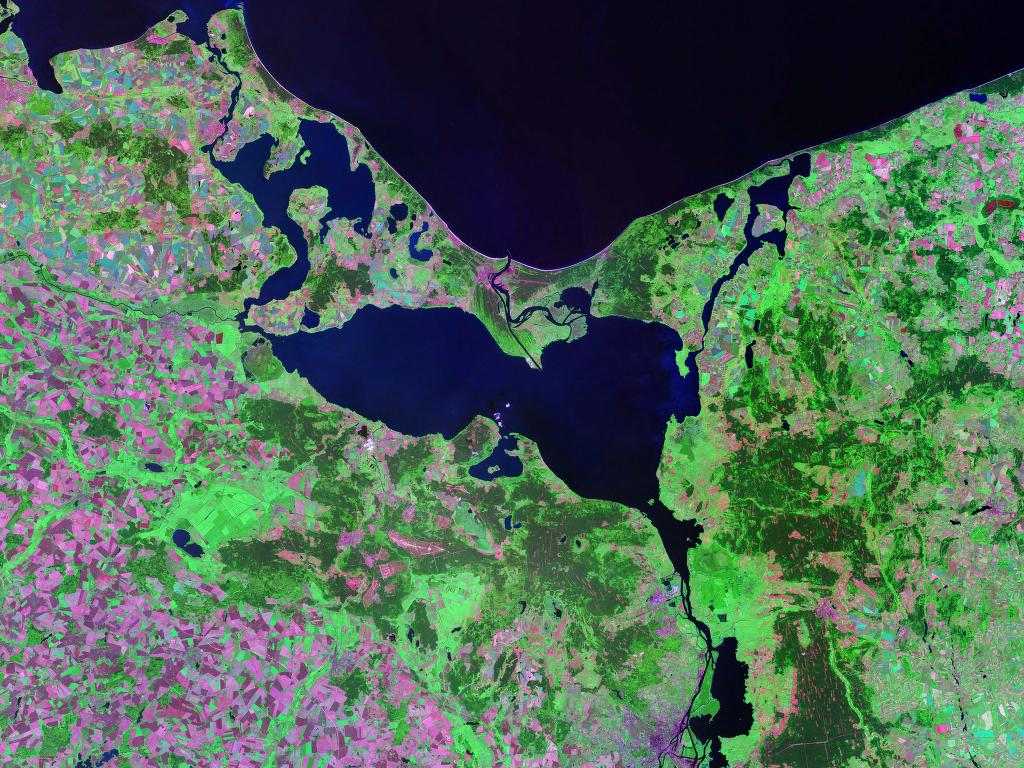- Usedom
Infobox Islands
name = Usedom
Uznam

image caption = Landsat map of the Usedom-Wolin area
image size = 300px
locator
map_custom = yes
native name =
native name link =
nickname =
location =Baltic Sea
coordinates =
archipelago =
total islands =
major islands =
area = 445 km²
length =
width =
coastline =
highest mount =
elevation =
country = Germany
country admin divisions title = State
country admin divisions = flag|Mecklenburg-Vorpommern
country admin divisions title 1 = District
country admin divisions 1 =Ostvorpommern
country admin divisions title 2 =
country admin divisions 2 =
country capital =
country largest city =
country largest city population =
country leader title =
country leader name =
country 1 = Poland
country 1 admin divisions title = Voivodeship
country 1 admin divisions =
country 1 capital city =
country 1 largest city =
country 1 largest city population =
country 1 leader title =
country 1 leader name =
country 2 =
country 2 admin divisions title =
country 2 admin divisions =
country 2 capital city =
country 2 largest city =
country 2 largest city population =
country 2 leader title =
country 2 leader name =
population = 76,500
population as of =
density = 172
ethnic groups = Germans, Poles
additional info =Usedom ( _de. Usedom IPA| [ˈuːzədɔm] , _pl. Uznam IPA| [ˈuznam] ) is a
Baltic Sea island on the border betweenGermany andPoland . It is situated north of theSzczecin Lagoon ( _de. Stettiner Haff)estuary of theOder river inPomerania . Most of the island belongs to the German district ofOstvorpommern in the Federal State ofMecklenburg-Vorpommern , with the exception of the eastern part and the city ofŚwinoujście ( _de. Swinemünde) which is in PolishWest Pomeranian Voivodeship . Its area is 445 km² (the German part 373 km²; the Polish part 72 km²).Its population is 76,500 (the German part 31,500; the Polish part 45,000).
Geography
The island is separated in the east from the neighbouring island of
Wolin by theŚwina ( _de. Swine) strait (or river), which is the main route connecting Szczecin Bay with thePomeranian Bay , a part of the Baltic Sea. The strait between the island and the mainland is called Peenestrom; it is an underwater extension of the valley of thePeene river, which flows into the westernmost part of Szczecin Bay. The island is mostly plain, partly covered by marshes.The main town on the island is Świnoujście, which has more inhabitants than the rest of the island. Another town, giving its name to the island, is called Usedom. The largest town in the German part is
Heringsdorf (formerlyDreikaiserbäder ). There are many popular tourist resorts on the northern coast, including the three Dreikaiserbäder (Emperor's Three Baths) citiesAhlbeck ,Heringsdorf andBansin , as well as Świnoujście andZinnowitz .Economic activities include agriculture, fishing, animal husbandry, food processing and timber.
History
Settled since the
Stone Age , the area was inhabitated by GermanicRugians , beforePolabian Slavs moved in during the 5th to 7th centuries. Around the isle,Wendish /Scandinavian trade centers such asVineta /Jomsborg andMenzlin arose. In 1128 Pomeranian dukeWartislaw I converted to Christianity through the efforts ofOtto of Bamberg . In1155 thePremonstratensian s established anabbey /cloister inGrobe , which in1309 was moved toPudagla village. In the meantime another abbey was created inCrummin and, soon, almost the whole island was in the abbey's possession. During the Reformation, ownership changed to Slavic dukes of Pomerania, who took over the island.During the
Thirty Year's War , onJune 26 1630 , the Swedish army under kingGustav Adolf II landed in the village ofPeenemünde located on thePeene river (Polish: Piana). Usedom was annexed bySweden after the war for almost a century, until in1720 it was sold for 2 millionthaler s to the Prussian kingFrederick William I . In1740 Frederick the Great developed a seaport inSwinemünde .The small village of
Peenemünde came to prominence again duringWorld War II . TheLuftwaffe tested theirmissile s androcket s, including the V-1 and V-2. Germany used thousands of slave labourers who were prisoners of war in theconcentration camp s on Usedom during World War II.In 1945 the eastern part of the island, together with the city and port of
Świnoujście , was assigned to Poland by thePotsdam Conference , the German inhabitants being expelled to the west. The territory was populated with Poles who had in turn been expelled by theSoviet Union from lands east of the Bug river.Tourism
The Isle of Usedom is one of Germany's major holiday and recreation areas due to its beaches, its nature and a number of elegant seaside towns such as
Zinnowitz andHeringsdorf , which have been frequented by the German and international nobility as well as the general public. A large number of hotels andbed and breakfast s is available on both sides of the German-Polish border. In addition to the coastline, the hinterland features nature reserves, castles, lakes and historic villages.Gallery
Wikimedia Foundation. 2010.
